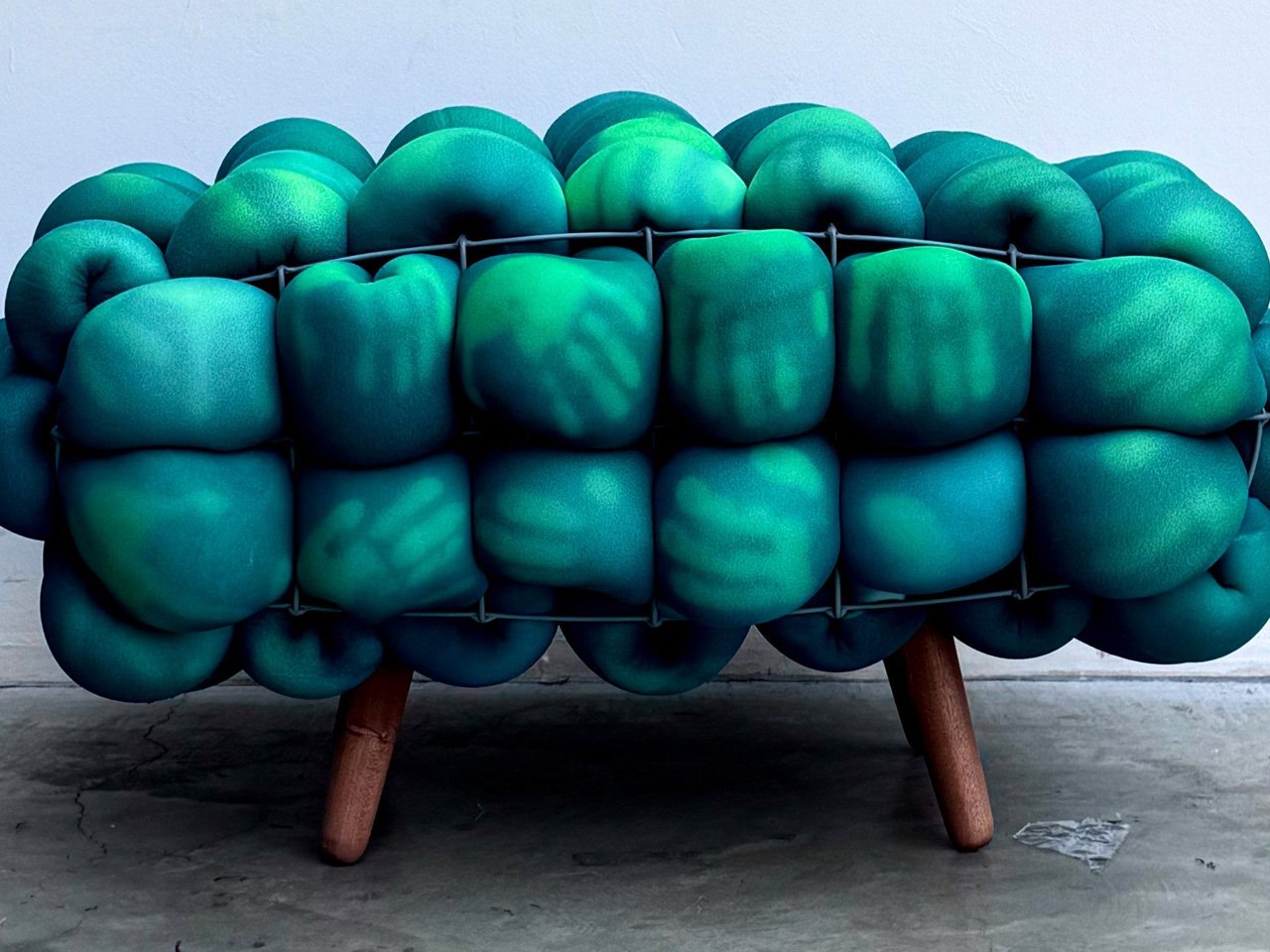Designed by Jacob Walls, the Pangolin benches convert the simple act of sitting into an interactive experience that responds to human touch. Walls created furniture that changes color like a mood ring, leaving ghostly imprints of hands and bodies across its surface. The thermochromic dye technology reacts to body heat, creating temporary visual memories of each interaction. The pieces blur the line between furniture and art, making every use a unique moment of connection. The design introduces a dynamic element to static objects, one that evolves with use.
Industrial foam offcuts form the foundation of each piece, materials typically destined for landfills now given new purpose through innovative design thinking. Walls deliberately left these foam structures unupholstered, allowing the thermochromic pigments to be applied directly to the three-dimensional surfaces. This strategy pushes the material in new directions, showcasing foam as a design element rather than hiding it beneath traditional upholstery.
Designer: Jacob Walls
The hand-coloring process requires precision and understanding of how thermochromic pigments interact with foam surfaces. Each seat receives individual attention, with the dye applied to create optimal color-changing properties across the entire surface. The technique demands expertise in both material science and craftsmanship, combining technical innovation with traditional making skills. The application process itself becomes part of the design narrative, with each brush stroke contributing to the final aesthetic.
The bench serves as both furniture and an interactive installation. The color changes occur immediately upon contact, creating real-time feedback that transforms passive sitting into active engagement. Users become part of the design process, with their body heat creating temporary patterns that fade and evolve. The benches work equally well in domestic settings and public spaces, adapting to different usage patterns.
The aesthetic impact of the Pangolin collection lies in its ability to make the invisible visible, revealing the subtle ways we interact with our environment. The color changes create a visual record of human presence, turning furniture into a canvas for temporary art. The benches possess a sculptural quality that commands attention even when not in use, their organic forms suggesting the natural world that inspired their creation. The color palette shifts between tones, creating depth and visual interest that changes throughout the day.
Jacob Walls has created more than furniture with the Pangolin collection—he has developed a new language for how objects can respond to human presence. It creates space for emotionally responsive design, where technology plays an important role in deepening our connection with the built environment. The seats build possibilities for future furniture that will adapt, learn, and evolve with our daily lives.
The post Upcycled Foam Benches change color when touched, like a Mood Ring first appeared on Yanko Design.

